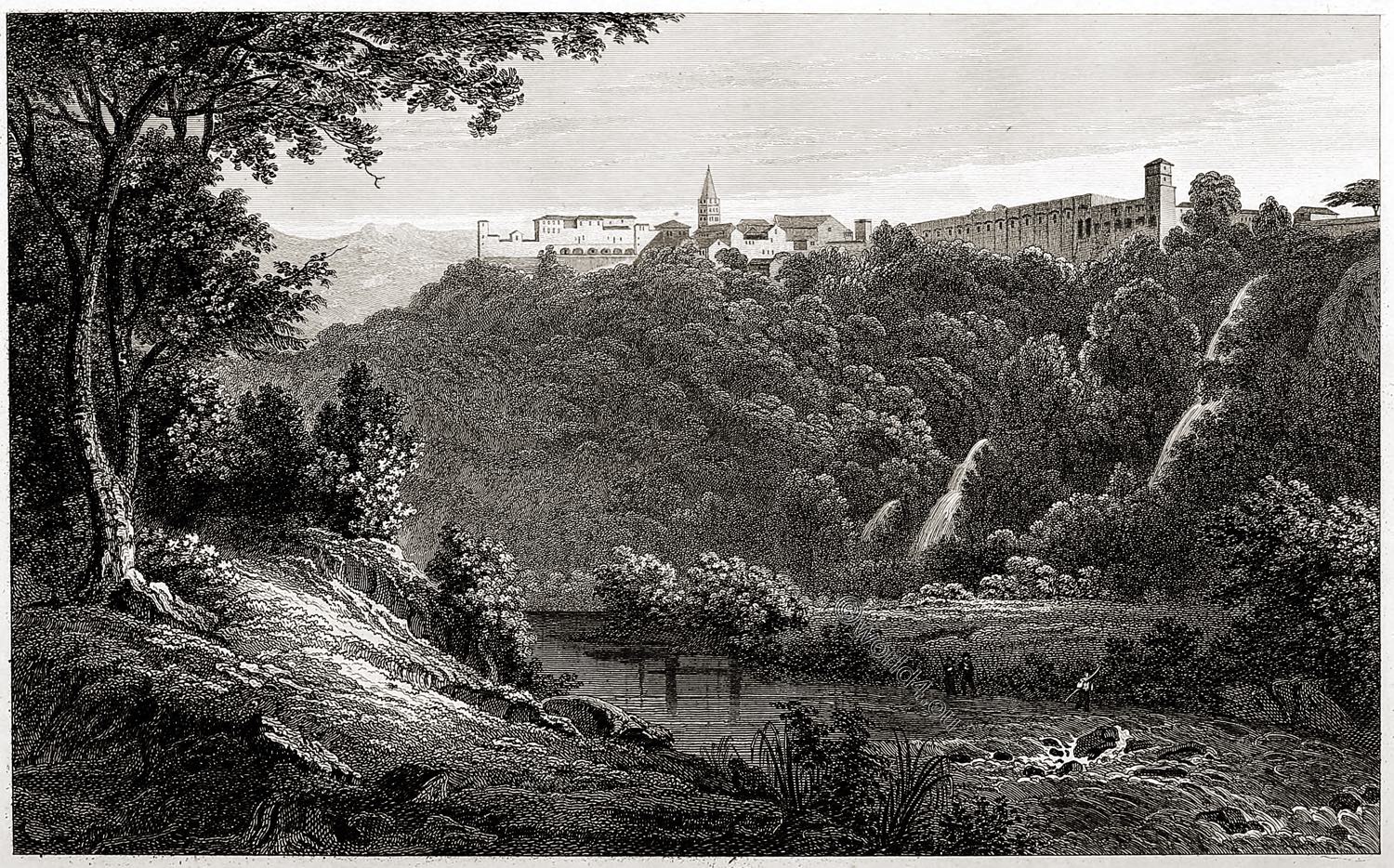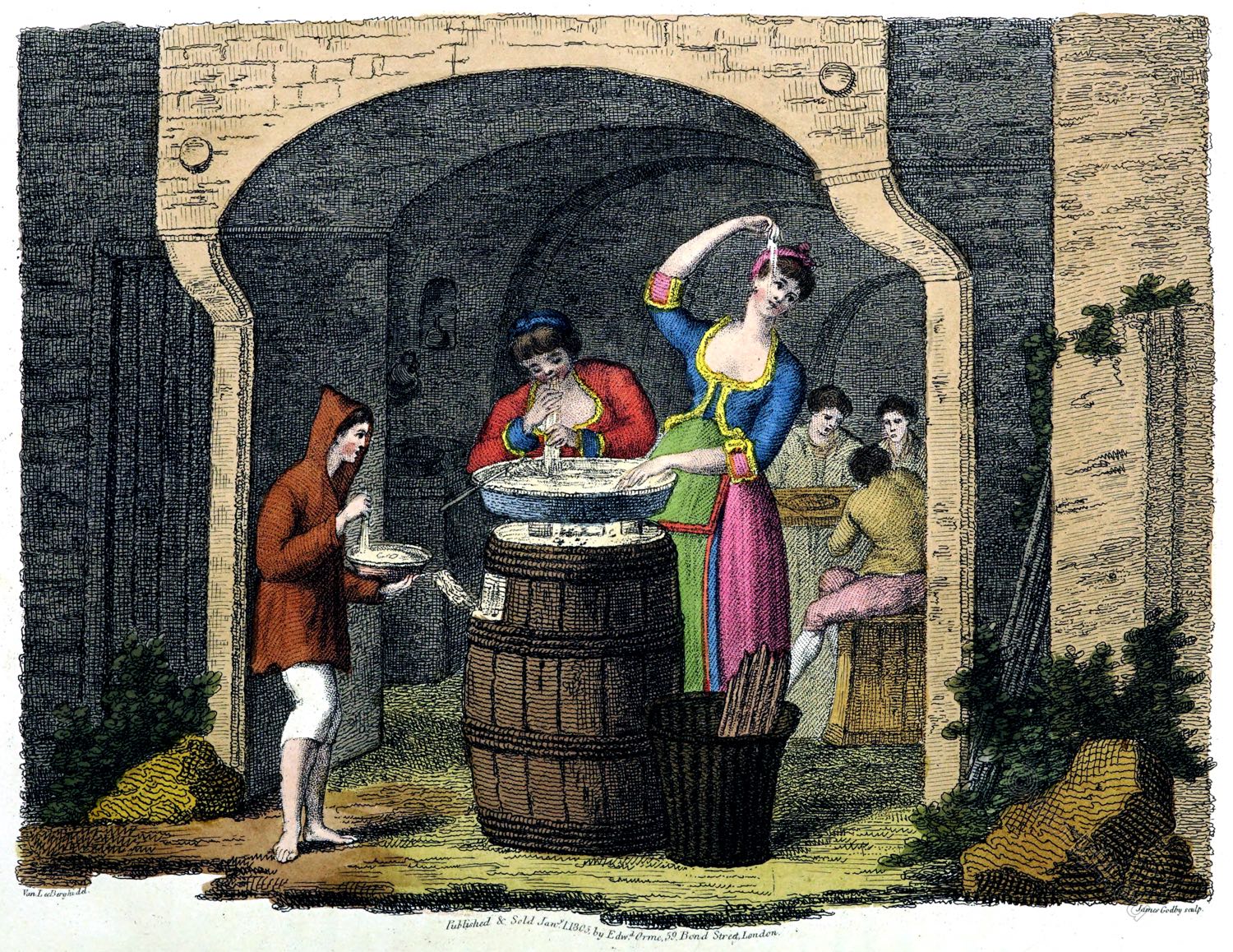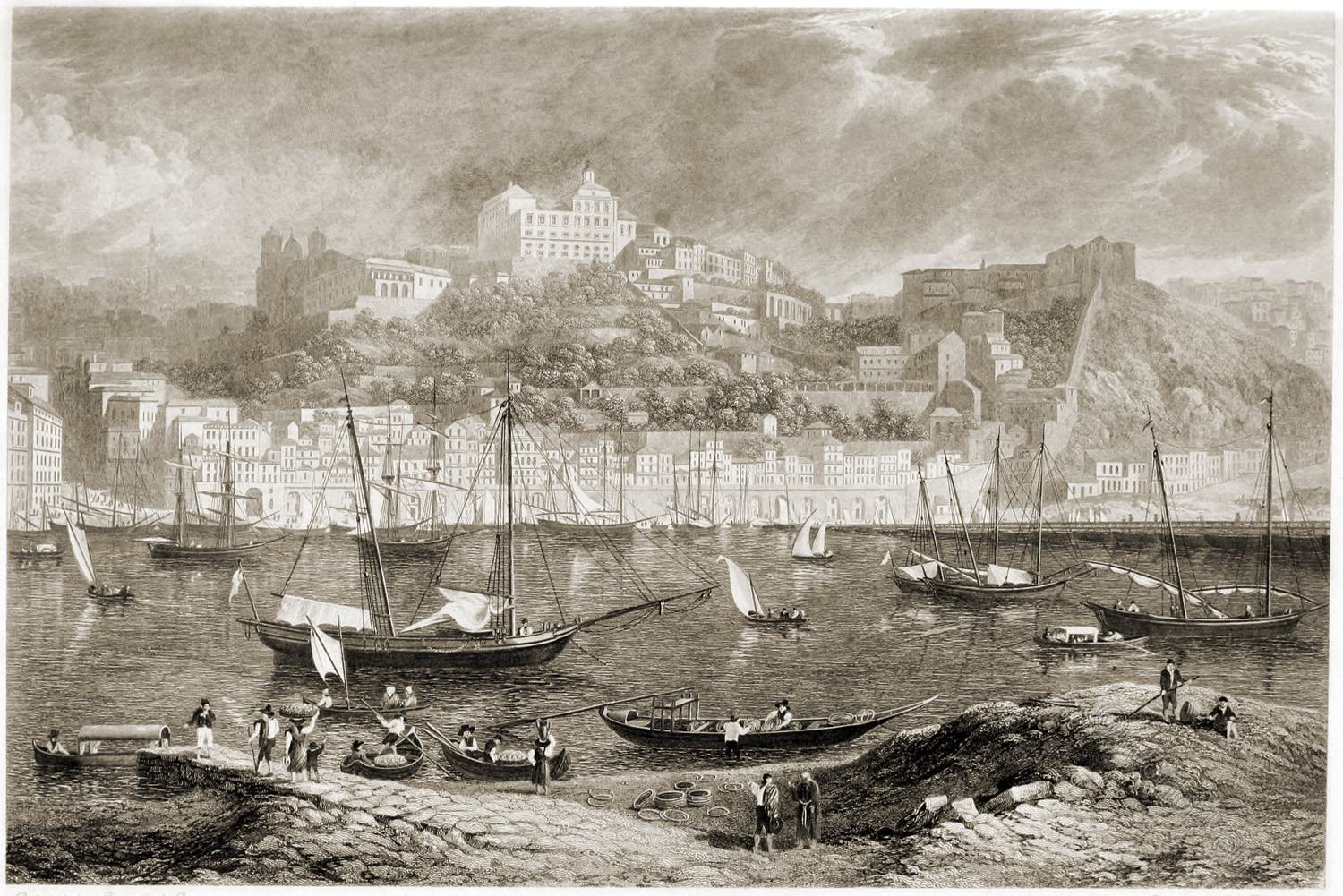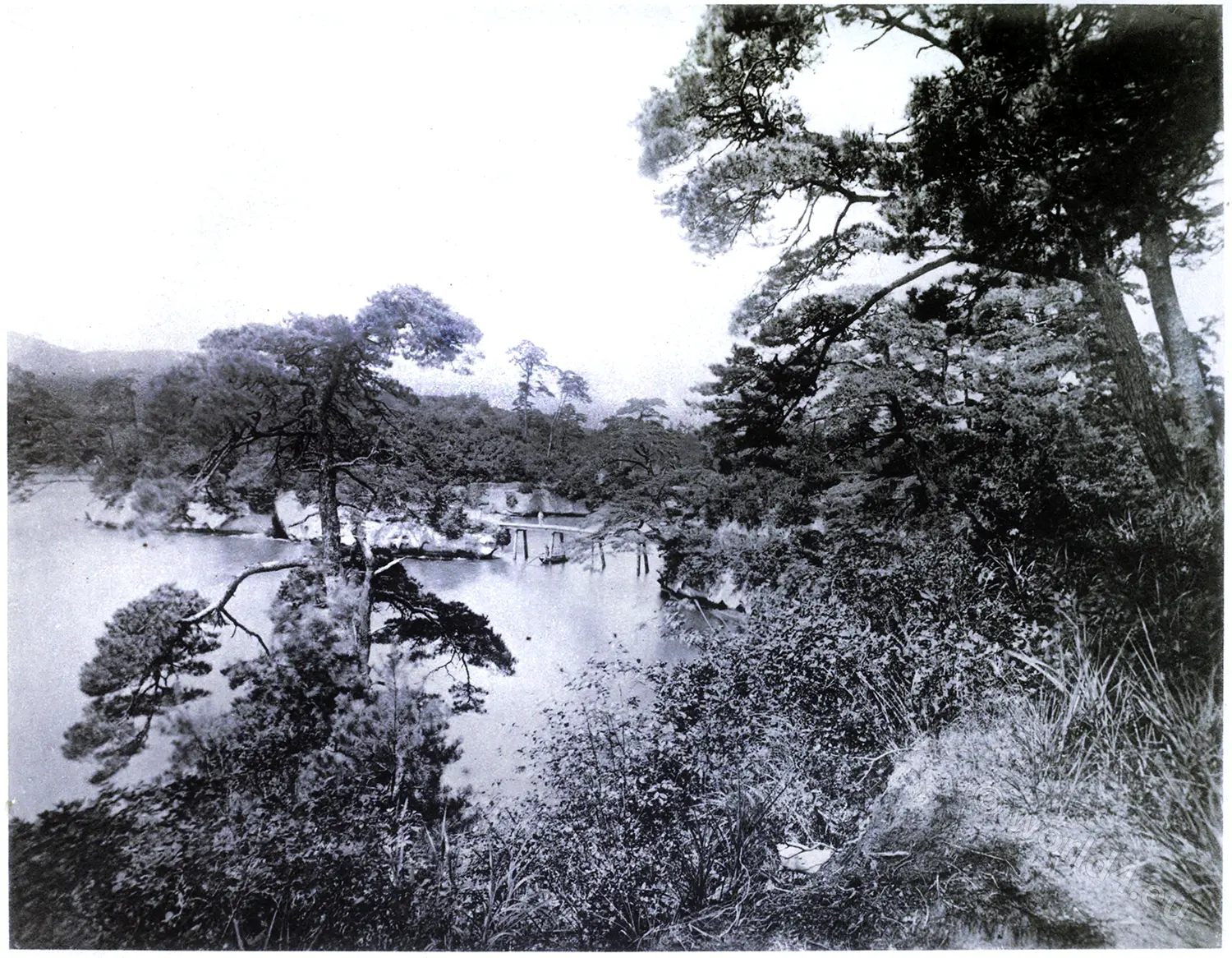
TIVOLI
FROM BELOW THE VILLA OF QUINCTILIUS VARUS.
PLATE XXXIV.
The sites of the numerous villas which once overhung every point of the romantic dells of Tivoli must be in great measure imaginary; that of Quinctilius Varus depends upon the appellation of Quintiliolo, applied to a few foundations; but in the absence of even such slight ground, conjecture must be baffled in assigning a locality to the various residences of Vopiscus, Propertius, Catullus, Plancus, Petronius, Lepidus, Marius, Sallust, or Martial.
Fancy must content itself in the identity of the surrounding scenery; and, however reluctantly, relinquish the gratification of treading in the footsteps of a Zenobia, or pacing the halls of her retirement, where her conversation and alliance were sought by the senators of Koine.
These three Cascatelli, or lesser cascades, are formed by a branch of the Anio, divided from the main stream for the use of the inhabitants of the town, and here precipitated about a hundred feet from the arches of the villa of Maecenas. Although objects of minor importance, the surrounding scenery, with the accompanying rocks and verdure, render them scarcely inferior in point of beauty to the falls of the main stream.
The villa of Maecenas above, extended as far as the gates of Tibur, and the public road passed through it. The modern ruin is close at the left on entering Tivoli from Rome. Amongst the ruins, which cover a great extent of surface, will be found a square building with Doric columns and arcades, which, intermingled with the cascades and porticoes, must have presented a singularly beautiful and agreeable effect. Below is a subterranean gallery, called the Stables; but some antiquaries have imagined them to have been baths, and others suppose them reservoirs. A triple row of arches remain of seventeen below; and through these, run the cascades. From above is seen the beautiful vale of the Anio, and over the Campagna, in the distance, Rome.
In the centre of the view is the cathedral dedicated to St. Laurence, containing a picture of the martyrdom of its patron, painted by a pupil of Annibale Carrachi. The building has been erected upon foundations called of a temple of Hercules, in which Augustus used, when at Tivoli, to dispense justice. In the court were once two Egyptian statues, taken from the ruins of Hadrian’s Villa, but since transferred to the museum of the Vatican.
Source: Italian scenery from drawings made in 1817 by Elizabeth Frances Batty. London: Published by Rodwell & Martin, 1820.
Discover more from World4 Costume Culture History
Subscribe to get the latest posts sent to your email.






